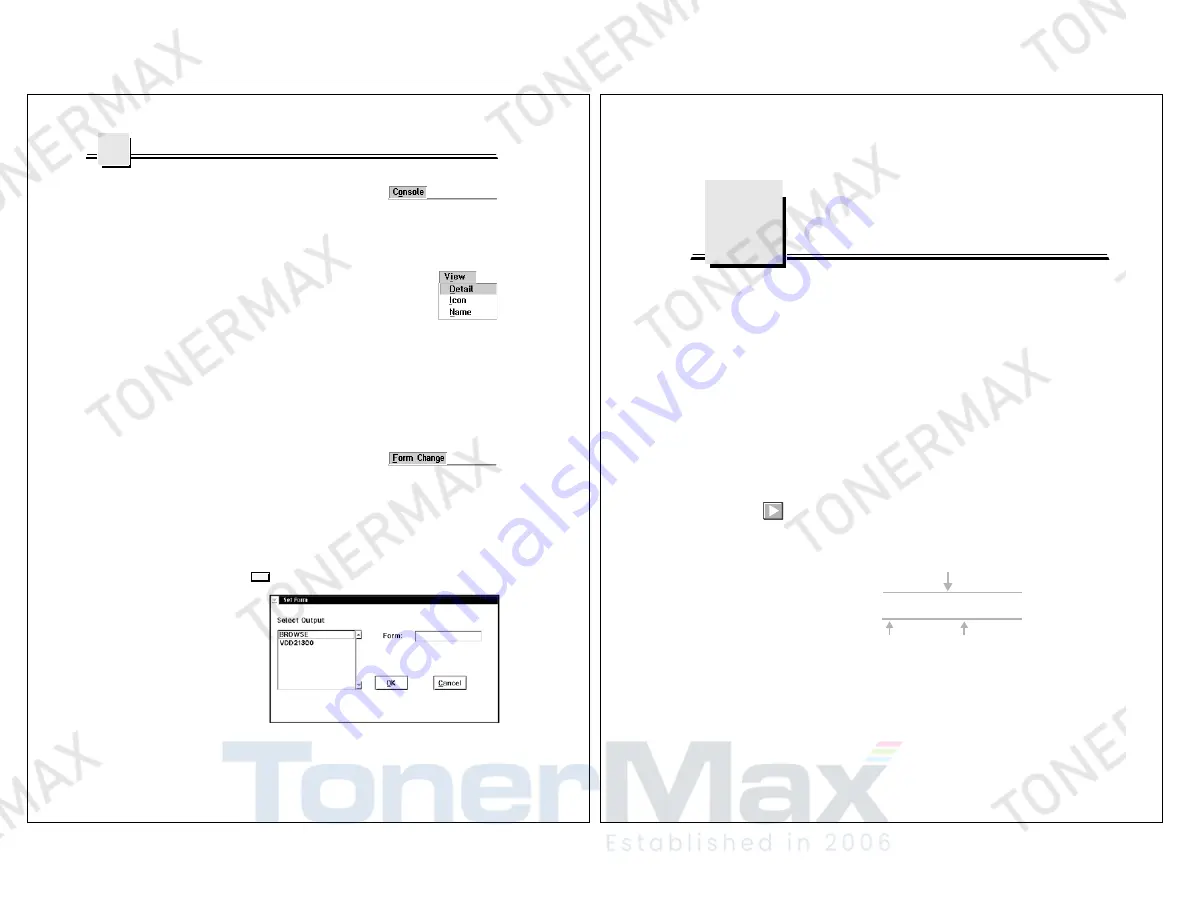
5-10
DocuPrint 900/1300 User’s Guide
Operator Interface
5
Console Menu
The
Console
menu allows you to display
Operator Console window.
To display the Operator Console window:
Choose
Console
from the menu bar. The Operator Console window
displays.The Console window is described later in this chapter.
View Menu
The
View
drop-down menu allows you to choose the way
jobs appear in the Job Status area.
To change the Job Queue view:
Choose
View
from the menu bar, then click
one of the following menu items:
Detail
, displays the jobs in the queue as a list of names. Information
includes, job id, profile name, number of sides processed, input and
output status, and copy information. This is the standard view when
the Job Queue window is opened.
Icon
, displays jobs in the queue as icons along with the job id and
input status.
Name
, displays jobs in the queue as a list of names.
Form Change Menu
The
Form Change
menu opens the Set Form
dialog box. This dialog box allows you to
specify a form for a selected output client.
To change a form:
1.
Choose
Form Change
from the menu bar. The Set Form dialog box
displays.
2.
Select the appropriate output driver from the
Select Output
field.
3.
Enter the desired form name in the
Form
field.
4.
Click the
button to change the form.
OK
DocuPrint 900/1300 User’s Guide
A-1
A p p e n d i x
A
Job Setup
and Initialization Files
Job Setup Files
Each print job requires a profile, a job set and resource set file. The job profile
defines the print job characteristics. The job set defines where the native job
controls and data reside, and where the virtual data (VDD) files should be
stored. For the Xerox input filter the job controls are the JDL and JSL. For the
AFP input filter they are the form and page definitions.
The resource set defines the directories where the native resources (electronic
forms, fonts, images) reside. Each resource has a separate directory entry and
an entry specifying the file extension which they have been given. The
resource set also defines the location where the converted virtual resources
(VDO, VDF, VDI) will be placed.
All profiles, resource set, and job set files reside in the subdirectories of
VISTA_DATA. You can identify them easily with their file extensions.
Profiles have the file extension
.
PRF, resources set files have the extension
.
RST, and job set files have the extension
.
JST.
Do not modify any job setup files unless you are the key
operator or system administrator. To edit any profiles or setup
files, you must have access to the OS/2 operating system.
All setup files contain keyword statements. A keyword statement has the
following format:
Keyword option can take on either a value, path name, file name, or text
string. The path name indicates where VISTA can get its data or program. A
text string (enclosed with quotation marks) usually describes the function or
provides information about a Client.
Before you create or edit any setup files, review the following samples to get
familiar with the functions and the values of the keywords.
For detailed information on how to create a new job or keyword statements,
refer to the VISTA User’s Guide (publication number
VISUSR_R24
).
Note
PRFP=C:\VISTA_DATA\USER\VDR
Keyword Statement
Keyword
Keyword Option


























